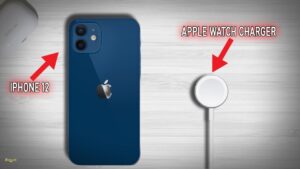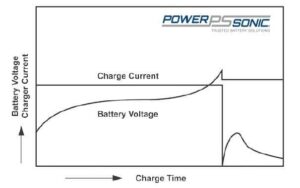Looking for a simple and straightforward guide on charger types? Well, you’ve come to the right place! In this article, we’ll explore what the different charger types are and how they can meet your specific needs. Whether you’re in search of a charger for your smartphone, laptop, or other electronic devices, understanding the options available to you is crucial. So, what are the different charger types? Let’s dive right in and find out!
What Are the Different Charger Types?
Charging our devices has become an essential part of our daily routines. Whether it’s our smartphones, laptops, or other electronic gadgets, we rely heavily on chargers to keep them powered up and ready to use. However, not all chargers are created equal. In fact, there are several different charger types available in the market, each designed for specific purposes and devices. In this article, we will explore the various charger types, their features, and when to use them.
1. USB Chargers
USB (Universal Serial Bus) chargers are perhaps the most common type of charger used today. They have revolutionized the way we charge our devices by providing a standard charging interface across different electronic devices. USB chargers are characterized by their rectangular shape with a USB port at one end and a wall plug or a cable at the other end.
USB chargers come in various capacities, typically measured in terms of amperes (A). The most common USB chargers are rated at 1A and 2.1A. The higher the amperage, the faster your device will charge. However, it’s important to note that charging speed also depends on your device’s capabilities and compatibility.
USB chargers can be further classified into two main types: USB-A and USB-C.
a. USB-A Chargers
USB-A chargers are the traditional USB chargers that have been widely used for many years. They feature the standard USB-A port, which is compatible with a wide range of devices, including smartphones, tablets, cameras, and more. USB-A chargers are typically found in older devices and are still commonly used today.
USB-A chargers have a maximum power output of 5V and are capable of delivering up to 2.4A of current. This power output is usually sufficient for charging most smartphones and smaller electronic devices.
b. USB-C Chargers
USB-C chargers, on the other hand, are relatively newer and offer several advancements over USB-A chargers. The USB-C port is smaller, reversible, and provides faster charging speeds. It can deliver higher power outputs, making it suitable for charging larger devices such as laptops and gaming consoles.
USB-C chargers have a higher power output of up to 20V and can deliver more than 3A of current. This higher power delivery allows for faster charging and can even power devices while they are in use.
It’s important to note that while USB-C chargers are compatible with older USB-A devices, the reverse is not always true. Make sure to check the compatibility of your devices before using a USB-C charger with them.
2. Wireless Chargers
Wireless chargers have gained popularity in recent years due to their convenience and hassle-free charging experience. As the name suggests, wireless chargers eliminate the need for cables and allow you to charge your devices simply by placing them on a charging pad or stand.
Wireless chargers use a technology called “inductive charging” to transfer power from the charger to the device. They work by creating an electromagnetic field between the charger and the device, allowing for efficient power transfer.
There are two main types of wireless chargers available:
a. Qi Wireless Chargers
Qi (pronounced “chee”) wireless chargers are the most widely adopted standard for wireless charging. They are compatible with a wide range of devices, including smartphones, smartwatches, and some laptops.
Qi wireless chargers use a standardized charging pad or stand that adheres to the Qi specification. This ensures compatibility across different devices and brands. To charge your device wirelessly, simply place it on the Qi-compatible charging pad or stand, and charging will begin automatically.
b. Proprietary Wireless Chargers
Some device manufacturers also create their own proprietary wireless charging standards. These chargers are designed specifically for their respective devices and may not be compatible with other devices or brands.
Proprietary wireless chargers often offer additional features or faster charging speeds, but they come with the drawback of limited compatibility.
3. Fast Chargers
Fast chargers have become increasingly popular as they allow for rapid charging of compatible devices. These chargers employ various technologies to deliver higher power outputs and significantly reduce charging times compared to standard chargers. Fast chargers are commonly available as USB-A or USB-C chargers.
Here are some common fast charging technologies you may come across:
a. Qualcomm Quick Charge
Qualcomm Quick Charge is a fast charging technology developed by Qualcomm, a leading manufacturer of mobile processors. Devices that support Quick Charge can take advantage of higher power outputs to charge faster.
Quick Charge chargers are typically backward compatible and can deliver the standard 5V output to non-Quick Charge devices. However, to enjoy the fast charging benefits, your device must support Quick Charge technology.
b. Power Delivery (PD)
Power Delivery (PD) is a fast charging standard developed by the USB Implementers Forum (USB-IF). PD chargers, usually USB-C chargers, can deliver higher power outputs and negotiate power requirements with compatible devices.
Power Delivery chargers are capable of providing higher voltages and currents, enabling faster charging for a variety of devices, including laptops, smartphones, and tablets.
4. Car Chargers
Car chargers, also known as car adapters or car chargers, are specifically designed to charge electronic devices while you’re on the go. These chargers plug into your vehicle’s cigarette lighter socket or 12V power outlet and provide a charging port for your devices.
Car chargers are available in various forms, including USB ports, wireless charging pads, and even dedicated charging cables for specific devices.
When choosing a car charger, consider the power output and compatibility with your devices. USB car chargers are the most versatile option as they can charge a wide range of devices. However, if you have a device that requires a specific charging cable, make sure to choose a car charger that supports it.
5. Solar Chargers
Solar chargers harness the power of the sun to charge your electronic devices, making them an excellent choice for outdoor enthusiasts and travelers. These chargers use photovoltaic cells to convert sunlight into electrical energy, which can then be used to charge your devices.
Solar chargers come in various sizes and power outputs, depending on your charging needs. Some solar chargers are portable and foldable, making them easy to carry in backpacks or attach to camping gear.
While solar chargers are a sustainable and eco-friendly charging solution, they do have some limitations. They heavily rely on sunlight availability, and charging times can be longer compared to traditional chargers. Nevertheless, they provide a valuable charging option when traditional power sources are unavailable.
Charging our devices efficiently and safely is essential in our fast-paced world. Understanding the different charger types available can help you make informed decisions when it comes to charging your devices. Whether it’s USB chargers, wireless chargers, fast chargers, car chargers, or solar chargers, each type has its own unique features and benefits.
When selecting a charger, consider the compatibility with your devices, charging speed, and any specific needs you may have. By choosing the right charger type, you can ensure that your devices are always powered up and ready to accompany you in your daily adventures.
Frequently Asked Questions
What are the different charger types?
The different charger types include:
What is a USB charger?
A USB charger is a common charger type that uses a Universal Serial Bus (USB) connection to charge various devices like smartphones, tablets, and portable speakers. It provides a convenient and widely compatible charging solution.
What is a wireless charger?
A wireless charger, also known as an induction charger, allows you to charge devices without the need for cables. It uses electromagnetic fields to transfer power between the charger and the device, typically through an induction coil.
What is a fast charger?
A fast charger is a type of charger that provides a higher power output compared to standard chargers. It enables devices to charge at a faster rate, reducing the overall charging time. Fast chargers are commonly used for smartphones and other mobile devices.
What is a car charger?
A car charger is a charger that plugs into the cigarette lighter or power outlet in a vehicle. It allows you to charge your devices while on the go, making it convenient for long drives or road trips.
What is a wall charger?
A wall charger, also called a plug-in charger, is a charger that connects to a power outlet in a wall. It is commonly used to charge devices like smartphones, tablets, and laptops. Wall chargers are usually included when purchasing new devices.
Final Thoughts
In conclusion, understanding the different charger types is crucial in today’s tech-driven world. From the widely-used USB-C chargers that offer faster charging and data transfer speeds, to the versatile wireless chargers that eliminate the need for cables, there are options for everyone’s needs. Additionally, the traditional USB-A chargers still play a significant role in charging various devices. Whether you’re a tech enthusiast or simply looking for a reliable charging solution, knowing the different charger types will empower you to make informed decisions about your charging needs.



